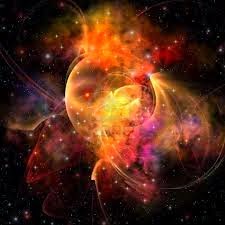Emission Nebula IC 1396
Sprawling across hundreds of light-years, emission nebula IC 1396 mixes glowing cosmic gas and dark dust clouds. Stars are forming in this area, only about 3,000 light-years from Earth. This particularly colorful view of the region is a composite of digital images recorded through narrow band filters. The filters actually block out most of the light ... but narrowly transmit wavelengths characteristic of specific glowing atoms in the nebula. In fact, the color scheme used here makes it easy to trace some of the elements which contribute to the emission from IC 1396. Emission from sulfur atoms is shown in red, hydrogen atoms green, and oxygen in blue. The beautiful and useful result is still very different from what the eye might see. IC 1396 lies in the high and far off constellation of Cepheus.
General information
Usually, a young star will ionize part of the same cloud from which it was born although only massive, hot stars can release sufficient energy to ionize a significant part of a cloud. In many emission nebulae, an entire cluster of young stars is doing the work.
The nebula's color depends on its chemical composition and degree of ionization. Due to the prevalence of hydrogen in interstellar gas, and its relatively low energy of ionization, many emission nebulae appear red due to the strong emissions of the Balmer series. If more energy is available, other elements will be ionized and green and blue nebulae become possible. By examining the spectra of nebulae, astronomers deduce their chemical content. Most emission nebulae are about 90% hydrogen, with the remainder helium, oxygen, nitrogen, and other elements.
Some of the most prominent emission nebulae visible from the northern hemisphere are the North America Nebula (NGC 7000) and Veil Nebula NGC 6960/6992 in Cygnus, while in the south celestial hemisphere, the Lagoon Nebula M8 / NGC 6523 in Sagittarius and the Orion Nebula M42.[1] Further in the southern hemisphere is the bright Carina Nebula NGC 3372.
Emission nebulae often have dark areas in them which result from clouds of dust which block the light.
Many nebulae are made up of both reflection and emission components such as the Trifid Nebula.
http://www.narrowbandimaging.com/New_Images_page.htm



No comments:
Post a Comment